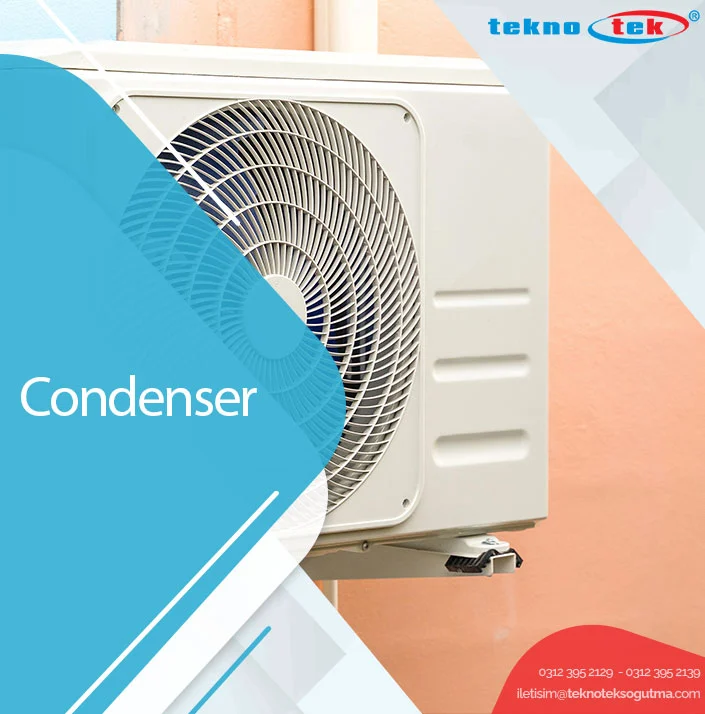Condenser is a component used in mechanical and electronic systems. This component serves various purposes. In electrical engineering, it is used in the sense of a capacitor, performing tasks such as energy storage and signal filtering. In air conditioning systems, it is located in the outdoor unit of the cooling circuit, transferring heat to the ambient air.
Condenser usage in the automotive industry makes it an indispensable part of air conditioning and engine cooling systems. In vehicle air conditioners, this component is used to efficiently manage the heat generated by the engine and the refrigerant gas of the air conditioning system. In industrial plants, these parts are designed to ensure high energy efficiency in process cooling applications.
What is a Condenser?
It is a component that transfers thermal energy from one medium to another. This component enables the cooling process to be carried out.
Its operating principle is based on condensing high-pressure refrigerant by transforming it from a gas state into a liquid state. This process allows the heat in the cooling cycle to be discharged to the outside environment.
Condensers are a critical component used in cooling systems and are widely used in everything from industrial facilities to household air conditioning systems.
Depending on the application requirements, different types can be used. The most commonly preferred models are air-cooled and water-cooled condensers. Air-cooled models transfer heat by using outdoor air, while water-cooled models have a higher capacity for efficiency. The use of insulation materials in the structure of condensers helps prevent energy losses, thereby improving performance.
The question of “what is a condenser used for?” is often asked. To answer this, it is necessary to know the basic functions of a condenser. In general, its functions are as follows:
Condensers in cooling cycles are indispensable components. Therefore, regular maintenance and cleaning are essential for long-term use and high performance. The operating principle of condensers is based on cooling the pressurized gas on condensing surfaces and converting it into a liquid state. This process is widely applied in many fields, from industrial production to food storage, from climate control to the automotive sector.

What Does a Condenser Mean?
Technically, it is a heat exchanger. This component is one of the fundamental elements in cooling systems. Its function is to allow the circulating refrigerant in the circuit to change phase and release its heat to the outside environment. During this process, the refrigerant enters the condenser tubes in gas form, is cooled by air or water passing over the surface, and the cooled refrigerant turns into a liquid. In this way, the cooling process can be continuously maintained.
The working principle of the component is based on the transfer of heat to a medium with a lower temperature. It is frequently used in industrial, residential, and commercial cooling systems. In air conditioning systems, the condenser in the outdoor unit ensures that hot air from indoors is expelled outside. In these systems, ensuring efficient heat transfer is crucial for keeping energy consumption low.
The types of condensers and their general characteristics are as follows:
- Air-cooled: Transfers heat directly to the outside environment via airflow.
- Water-cooled: Transfers heat through a water circuit.
- Evaporative: Provides high efficiency using both air and water.
This classification, which varies according to the working environment and needs, shows that condensers, with their cooling capabilities, are used in many different sectors, from food preservation to industrial machinery. In addition, with the right selection of insulation materials, the device’s energy efficiency can be increased, and it can be protected from external factors.
By enabling heat transfer through phase change, this component is one of the main pieces of equipment that sustains the cooling cycle and directly affects system performance. For both extending the device’s lifespan and reducing energy costs, proper design and regular maintenance of this component are extremely important.
For more detailed information about the condenser component, you can contact Teknotek.

